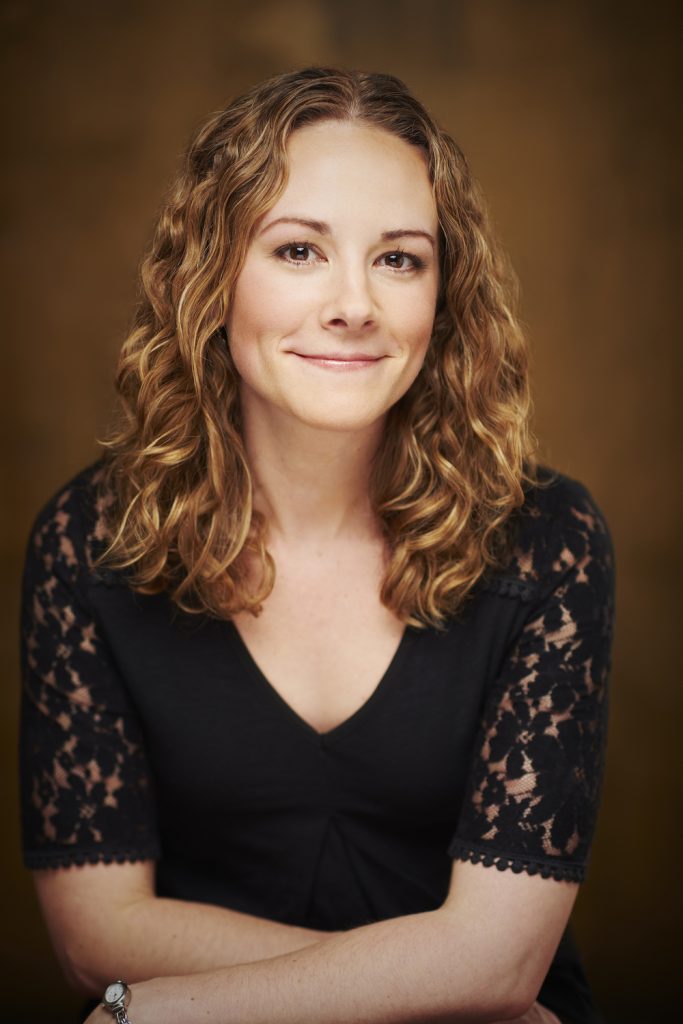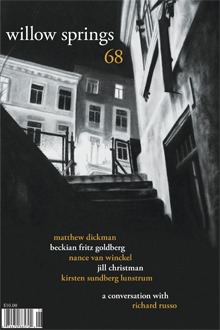
About Clare Beams
Clare Beams and her husband live in Massachusetts, where she writes and teaches 9th-grade English. She received her MFA from Columbia in 2006. Her story “We Show What We Have Learned,” originally published in Hayden’s Ferry Review, will appear in the Best American Nonrequired Reading 2011. Her story “Much Peace,” published in Inkwell, received a Special Mention in the Pushcart Prize 2011 volume. She has a story forthcoming in One Story and has just finished, she thinks, a novel called The Meditations of All Our Hearts. She’s at work on more stories.
A Profile of the Author
Notes on “Hourglass”
I think “Hourglass” began out of my fascination with a certain kind of lofty language that gets used sometimes in discussions about teaching. For the past five years I’ve been a ninth-grade English teacher at a small private high school, a wonderful place. I love the work, and I’m surrounded by colleagues who do, too. When people who love teaching talk about it, there’s a tone that can color things, a grandness that strikes me as unusual (as grandness goes) because it’s genuine. I think that for the most part we talk about teaching in lofty terms because we can’t help it. The kids really do make it hard to use any others.
In writing this story, I was interested in taking that kind of language in a darker direction. What if the idea of shaping others, which is at the heart of my understanding of a teacher’s job, were more literal and sinister? What kind of tyrant could have that kind of vision, and what kind of student might be tempted by it?
Of course, all of this makes the whole process sound much more conscious and calculated than it was. All I really had to go on when I started writing was an image of this old streaked-stone school and the sound of Mr. Pax’s voice. These elements combined to make the story feel somehow outside time in a way that was exciting to me. When I realized how Melody was going to have to transform, everything became much harder for a while—I knew pretty much where I wanted things to go, but not how to take them there convincingly—and the story and I are both indebted to Sam Ligon for his incredible insight and patience along the way. He helped “Hourglass” to become a much better version of itself.
Notes on Reading
As a reader, I have an enthusiasm for old British things that I think has left its mark on “Hourglass.” I love Keats and Tennyson and the thick, sprawling novels that have always reminded me of big houses with dark corners—Our Mutual Friend and Jane Eyre and Great Expectations and Middlemarch. There’s a kind of scope there, a feeling of entering a whole world, that I’ve found and loved in some more modern books, too. Chris Adrian’s The Children’s Hospital blew me away, as did Geoffrey Eugenides’ Middlesex and A.S. Byatt’s The Children’s Book, and I just finished reading Julie Orringer’s wonderful The Invisible Bridge. Last summer I had a great time with Sarah Waters’ The Little Stranger, a fabulously creepy and atmospheric ghost story. All of those books—though in very different ways—demand that a reader slow down and make space for them.
Recently I’ve been reading short story collections, something I tend to do when I’m revising stories of my own, as if I’m going to find some magic key that will make the whole process easier. That never happens, but I have found some wonderful books: recent highlights are Robin Black’s If I Loved You, I Would Tell You This, Anthony Doerr’s The Shell Collector, Kelly Link’s Stranger Things Happen, and Kevin Wilson’s Tunneling to the Center of the Earth.
And then there are my longstanding loves, writers who fill me with feelings of inadequacy and admiration and most of all gratitude. I will never be able to read enough Alice Munro, who packs her worlds into small spaces in a way that amazes me. For pyrotechnic sentences, Nabokov and Woolf. And for the sheer beauty and density of what can be done with words, no one has anything on Shakespeare. Hamlet and King Lear are probably the most staggering to me, but
I teach Romeo and Juliet to my 9th-graders, and every year I find something new in it.


